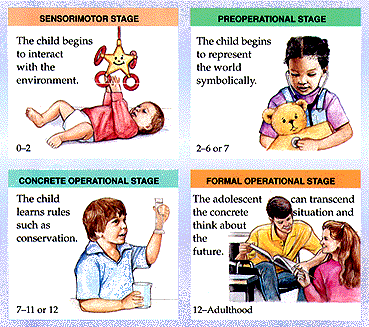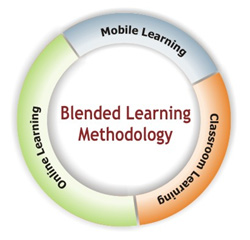TDC
3 – Principles of Language and Learning
Teacher: Lueli Ceruti
Neuroscience
– What Makes a Brain-friendly Activity
 |
| http://jeffhurtblog.com/wp-content/uploads/2009/12/Brain.jpg |
There
are a million activities a teacher can do in class to facilitate learning. But
are they all brain-friendly? Do the students use all the parts of their brains?
Is the teacher allowing them to use their sensory cortex, back integrative
cortex, frontal integrative cortex, and motor cortex? Ideally, that’s what
should happen. In this post, I’ll be analyzing two videos presented to us in
the first part of the course. The first one is “the meteor activity” and the
second one is “the buzzer activity”. The idea here is not to criticize the
activities, but to analyze them from a brain perspective.
The Meteor Activity
The meteor activity was excellent because it
involved whole-brain learning. The teacher used their prior knowledge and
neuronal networks by showing them a disaster film about a meteor that was going
to crash into earth. I'm guessing all the students had probably watched the
movie or some other kind of similar film. The back cortex comes into play as
they use their extrinsic memory (semantic and episodic) to remember that event.
After that, the teacher gave each student a piece of paper with an action verb.
They went outside and the students had to act out their "action".
While they were doing their own action, they had to pay attention to what the
others were doing when the meteor hit. Again, they had to use their
memory. First, they used their extrinsic memory, and then their intrinsic
memory, in order to act out their roles. They also had to use their frontal
cortex and working memory to remember what their classmates were doing, because
they had to retell what their classmates had been doing once they got back to
class.
When they were back in the classroom, the
teacher used their prior knowledge of grammar to ask simple past questions.
What did they do? Who mimed better? etc. After that, the teacher asked some
questions such as "what was he doing when the meteor crashed"? The
students had to hypothesize to produce the answer, but they had verb to be in the present and past, and the
present continuous (verb to be + ing),
in their neuronal networks. So, they heard the question and, with a little
guidance from the teacher, they were able to join their prior knowledge,
semantic and episodic memory, and the emotion of doing the actions to
hypothesize and come up with the right structure to answer the questions
(sensory input, reflection, hypothesis, and active testing).
What can I transfer to my classroom? Well,
the activity was very fun for the students. They went outside and had fun
acting out their roles. This created a nice episodic memory for them, which
made it easier to remember things back in the class. Stories make a difference
and help students remember what they are supposed to. Also, the teacher totally
connected with the students and respected their prior knowledge. She started
from the information that they already had. They were having fun together. Consequently,
there was no risk and the amygdala was left alone. The students were able to
fulfill the learning cycle of their brains. Coming up with an activity like
this definitely helps students use their whole brain.
The Buzzer Activity
The students were divided into 2 groups and
they used the buzzer in pairs to answer the questions. The first activity was
very simple and they had to answer yes or no (or true or false). The teacher
established prior knowledge. After that, there was another activity, where they
had to answer in short answers and correct the information if it were wrong. Reflection
and hypotheses came into play. Like in the meteor activity, the students had to
use their whole brains to participate. There was an activity for memory and
back cortex, an activity for reflection (integrative cortex), the opportunity
to hypothesize the correct answer (front cortex), and the final movement of
their hands to press the buzzer (motor cortex).
There were also emotions involved. The
students were quite excited because it was a competition. They were also having
fun and paying attention to the others. The students could evaluate how they
were doing in comparison to their classmates through this competitive activity.
After all, peers tend to have similar neuronal networks. Although some might
only look at the extrinsic motivation of the game and hitting the buzzer, if
they had success, it created some intrinsic motivation. Thus, happiness and
long-term memory might have been achieved.
The activity was really nice because it was
very linear. Teachers have to respect the students' neuronal networks, start
from there, and then move forward in order to create a reasonable challenge. If
the challenge is too great, the students might get frustrated.
Some viewers may argue that the students
might have had only extrinsic motivation. They might have been only interested
in the game, and not so much in what they were learning. That would explain why
some of them lost interest after a while. However, a little competition can be
good in class, right? Emotion motivates students. And it also helps them remember
things. They might remember the event and what they did (episodic memory),
which in turn might help them remember the concepts that were being taught
(semantic memory). Learning is the goal. And different students will learn
different things at different paces. If some students only improved their
translating abilities, for example, so be it. We must not expect that all
students will perform at the same level. I'm sure some of them thought about
their answers (when they had to correct the wrong sentences). The point is,
after all, whether they used their whole brains or not. In my humble opinion,
they definitely did!
 |
| http://sharpbrains.com/wp-content/uploads/2006/12/a7021_2730.jpg |












